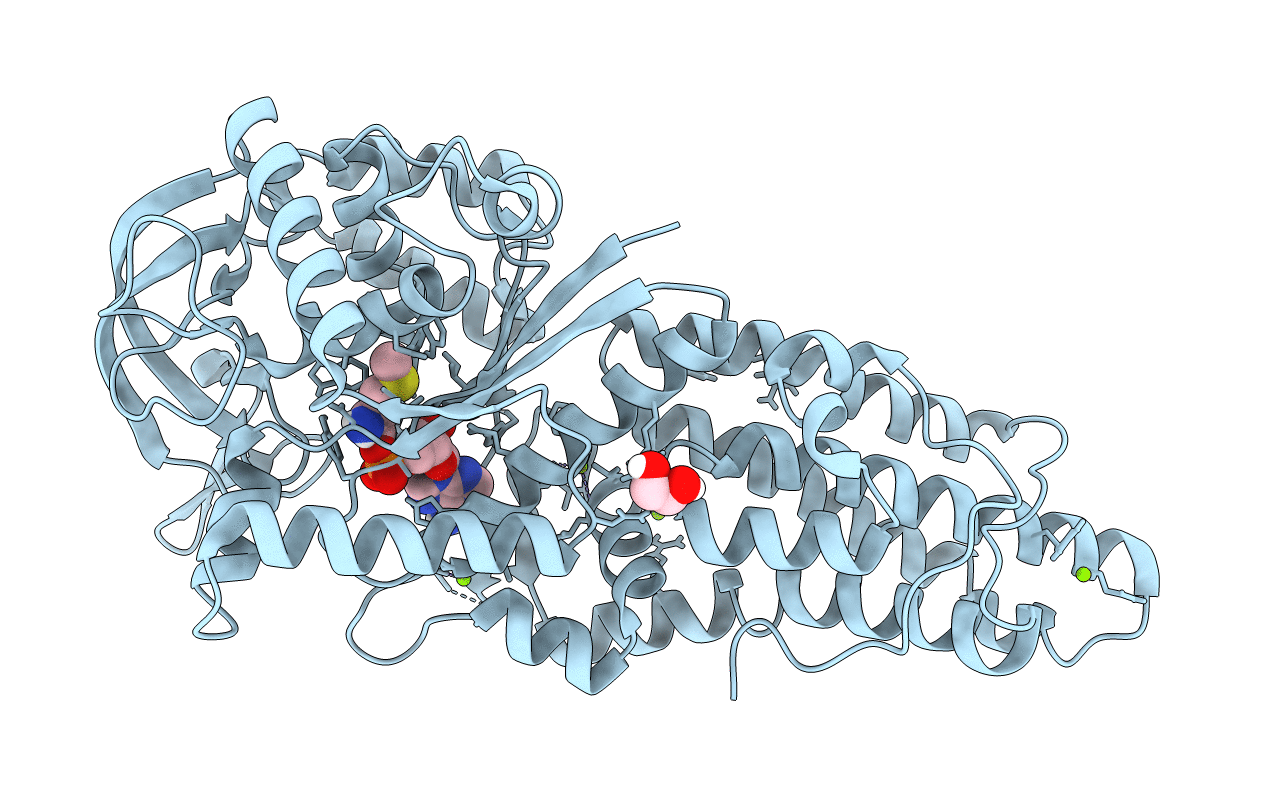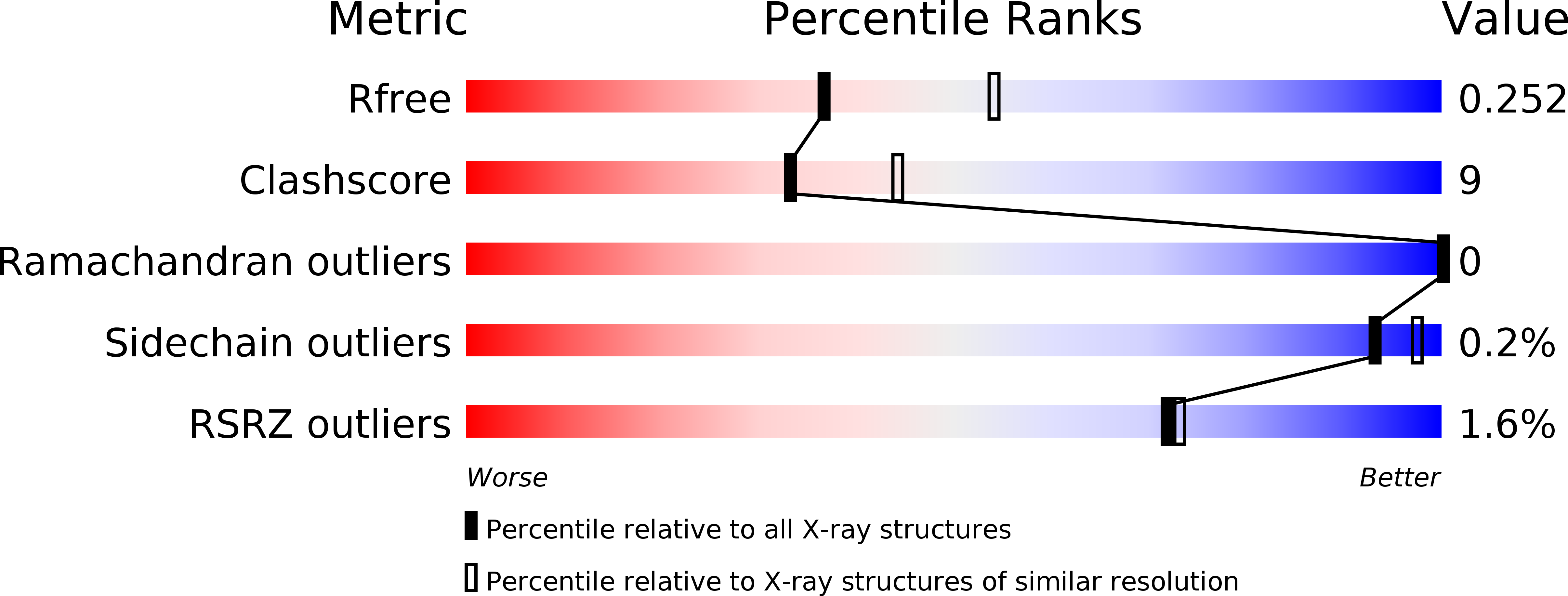
Deposition Date
2017-04-06
Release Date
2018-07-11
Last Version Date
2023-11-22
Entry Detail
PDB ID:
5XET
Keywords:
Title:
Crystal structure of Mycobacterium tuberculosis methionyl-tRNA synthetase bound by methionyl-adenylate (Met-AMP)
Biological Source:
Source Organism:
Mycobacterium tuberculosis H37Ra (Taxon ID: 419947)
Host Organism:
Method Details:
Experimental Method:
Resolution:
2.38 Å
R-Value Free:
0.25
R-Value Work:
0.20
R-Value Observed:
0.20
Space Group:
H 3


